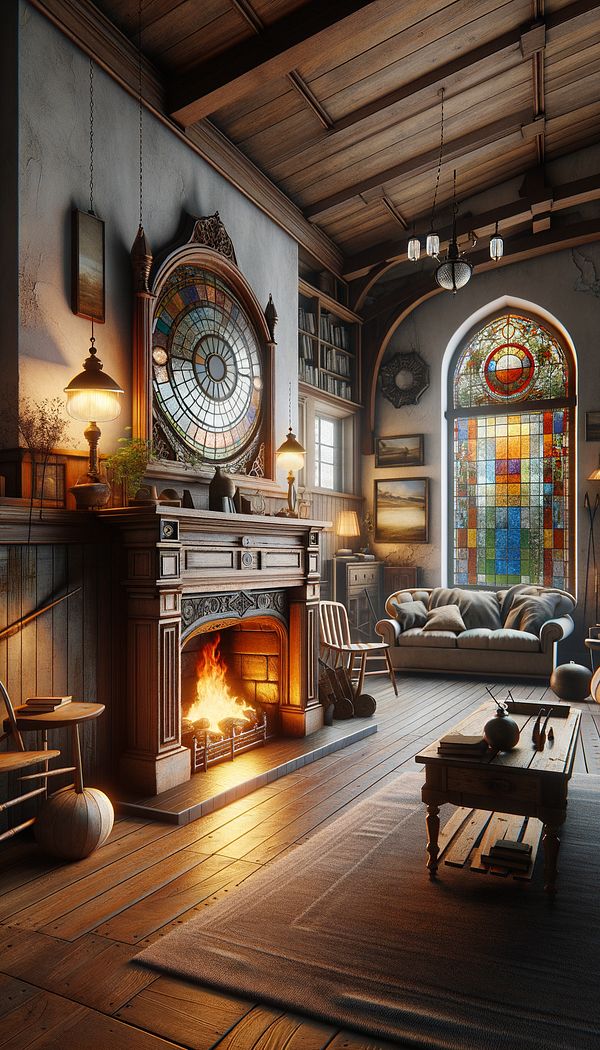What is Architectural Salvage?
Architectural salvage refers to elements of buildings saved from demolition or renovations for reuse in other projects.
Description
Architectural salvage is a fascinating and eco-friendly aspect of interior design and construction. It involves the recovery and reuse of architectural components and materials from buildings that are being demolished or renovated. These elements can include doors, windows, mantels, tiles, lighting fixtures, and much more. By salvaging these materials, not only are unique, historical, and sometimes rare pieces preserved, but the environmental impact of new production and waste is also reduced.
Architectural salvage requires a keen eye and sometimes a bit of creativity. For individuals or professionals in the field of interior design, it offers the opportunity to incorporate one-of-a-kind and vintage elements into modern designs, creating spaces that are both unique and rich in history. Additionally, architectural salvage encourages sustainable practices within the industry by fostering a cycle of reuse. This approach not only conserves resources but also adds a layer of storytelling and depth to any design project.
Usage
Architectural salvage can be used in a variety of contexts. Homeowners might choose a vintage stained glass window as a statement piece in a new construction. Restaurants or shops may opt for reclaimed wood flooring or brick for an authentic, rustic vibe. Even modern office spaces can incorporate salvaged items such as antique lighting fixtures or ornate doors to add character and distinction. Beyond aesthetic appeal, architectural salvage allows designers to create environments with embedded history and conservation values, appealing to clients who are environmentally conscious or enamored with the charm of the past.
FAQs
-
Where can I find architectural salvage materials?
Architectural salvage materials can be found at specialized salvage yards, antique stores, or through online marketplaces and auctions. Additionally, there are companies and organizations dedicated to reclaiming and selling these materials.
-
Is it more expensive to use architectural salvage in a project?
The cost of architectural salvage varies widely depending on the rarity and condition of the items. While some unique or antique pieces may be more expensive, many salvaged materials are competitively priced and can even save money compared to new items, especially when considering their unique attributes and environmental benefits.
-
How do I know if an architectural salvage piece is right for my project?
Consider the style, scale, and condition of the salvage piece in relation to your project. It's important to measure carefully and consult with professionals if necessary. Additionally, thinking creatively and being flexible with your design can help incorporate salvaged items in a way that complements your space.
Practical Application
When exploring architectural salvage for your next project, start with a clear vision or theme in mind, but remain open to inspiration from the materials you find. Ensure the structural integrity and compatibility of salvaged items with your space, and don't hesitate to repurpose or modify items to fit your design needs. Remember, integrating architectural salvage is not only about aesthetic appeal; it's also a reflection of values like sustainability and historical preservation. Engaging with local salvage yards and sharing your interest can lead to discovering unique pieces that add depth and character to your designs.
-
Architectural Elements199 articles
-
Design Styles478 articles
-
Historical Periods & Movements150 articles
-
Construction & Building86 articles
-
Sustainability & Eco-Friendly Design69 articles
-
CommodeA commode is a type of cabinet or chest of drawers, often used for storing clothing or personal items.
-
American CountryAmerican Country is a design style that embodies a casual and comfortable aesthetic inspired by rural American life.
-
Gothic RevivalGothic Revival is a design style that reinterprets the architecture, interiors, and decorative arts of the Gothic period.
-
Spoon BackA spoon back is a chair design characterized by a curved, concave backrest that resembles the shape of a spoon.
-
BauhausBauhaus is a design movement that originated in Germany, emphasizing functionality, simplicity, and the use of modern materials.
